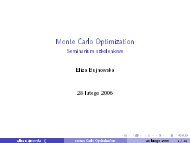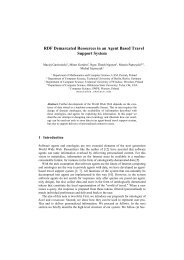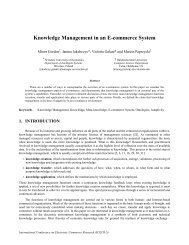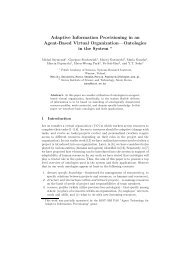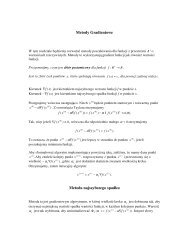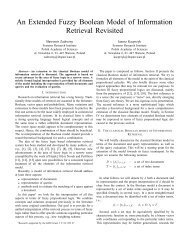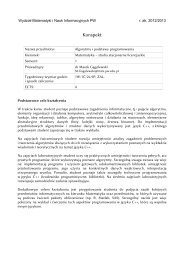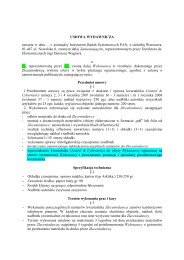Combining Information from Multiple Internet Sources
Combining Information from Multiple Internet Sources
Combining Information from Multiple Internet Sources
Create successful ePaper yourself
Turn your PDF publications into a flip-book with our unique Google optimized e-Paper software.
module. At the end of this section the sequence diagram which depicts the information contained in<br />
this section is presented.<br />
As the first step of the process the user provides the query and the algorithm name as HTTP<br />
request parameters. Those are read and checked by the GatewayServlet object which displays a<br />
message if the parameters are invalid. Then the GatewayServlet wraps the parameters into a<br />
SearchParams object, sets those as an HTTPSession attribute and forwards session object to the<br />
SearcherClientAgent. The SearcherClientAgent then creates a new Manager Agent (MA) with a<br />
random name and stores its AID as a session attribute. Then it forwards the created SearchParams<br />
object to the Main module entry point - the newly created MA- and waits for the response <strong>from</strong> the<br />
agent. Afterwards, the MA receives SearchParams which is in turn unwrapped providing the query<br />
and the algorithm. Then search engines are queried and algorithm finishes processing the List of<br />
results is returned to the SearcherClientAgent. Depending on the case if the algorithm was able to<br />
yield the answer or not, the resulting webpage will contain buttons to provide feedback for specific<br />
URL. If the webpage contains no buttons for feedback, the process is finished. If, however, the<br />
webpage contains buttons for providing feedback, the user may view web pages under those URL<br />
and then provide feedback by clicking the button next to the URL he chooses as the best. Then the<br />
URL is forwarded to the GatewayServlet object as HTTP request parameters. The first parameter<br />
contains the link name and the second contains the actual URL. Those parameters are then wrapped<br />
into the HTMLTagA object, set as a session attribute and forwarded to the FeedbackAgent.<br />
FeedbackAgent forwards the HTMLTagA object to the Main module (MA) which can finish its<br />
processing tasks. After finishing processing tasks MA is still alive waiting for another request.<br />
However when the server session has ended the MA is destroyed immediately.<br />
The following sequence diagram depicts the information described in the above part. This<br />
diagram can be viewed as a summary of what was described before as it presents the workflow and<br />
information flow between components of this module.<br />
9



